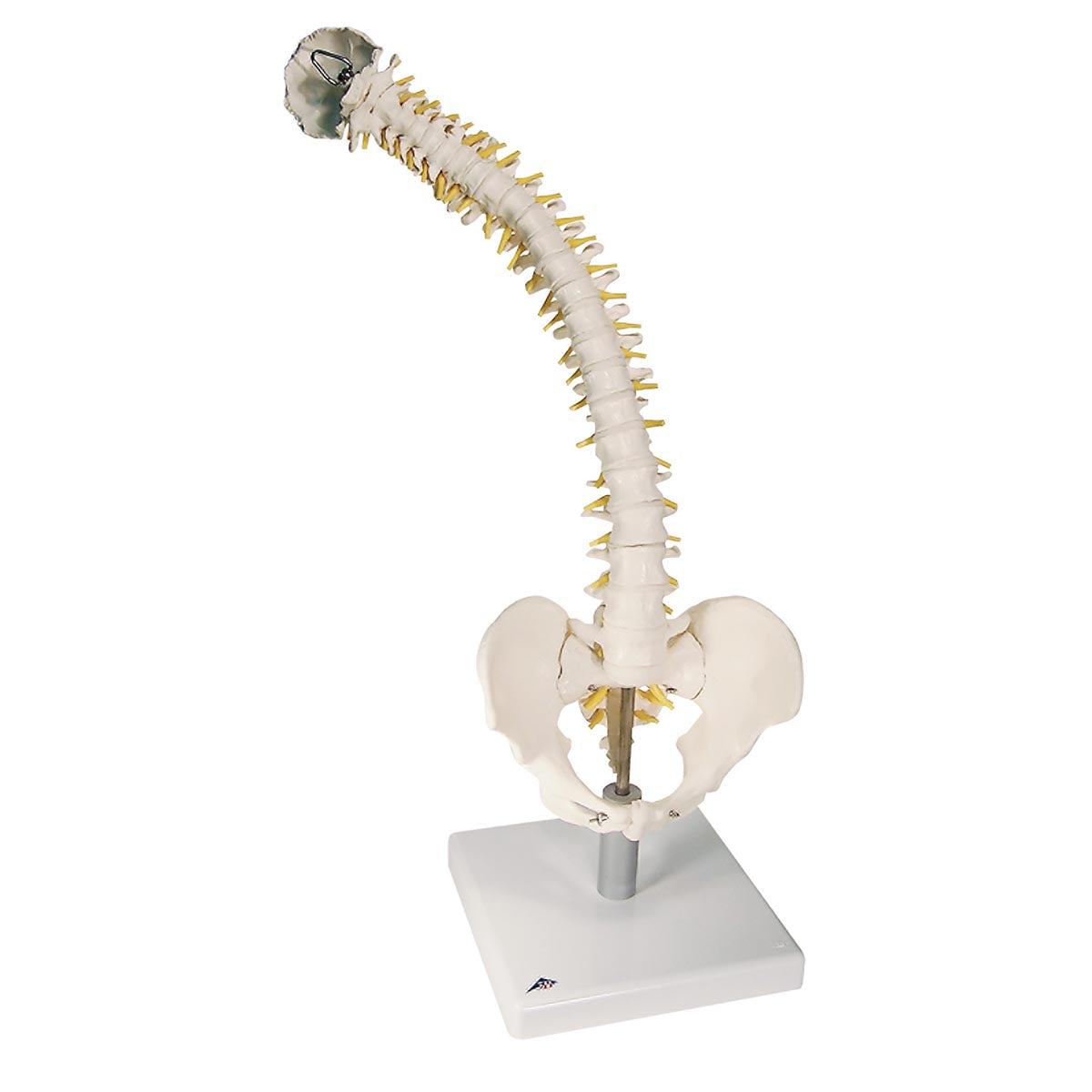SKU:EA-1008545
Flexible model of the spine with extra-soft discs, nerves etc. presented on a stand
Flexible model of the spine with extra-soft discs, nerves etc. presented on a stand
ATTENTION! This item ships separately. The delivery time may vary.
Couldn't load pickup availability
If you are looking for a flexible model of the spine to demonstrate scoliosis, we would highly recommend this model. The model can also be used for many other purposes. It includes spinal nerves, the neck bone (os occipitale) and the pelvis.
The model measures 83 cm in height. The vertebrae are held together by a flexible metal spiral tube. In addition, the discs (the discs between the vertebral bodies) are made of special foam, which induces a natural springy movement. The model is delivered on a stand, which allows undisturbed grips on the spine from all imaginable angles.
Anatomically speaking
Anatomically speaking
Anatomically speaking, the model shows the entire vertebral column, which consists of a neck part, a chest part, a lumbar part, a pelvic part and the coccyx. The neck bone is also included. Therefore, the model shows the two most important joint types in the spinal column, which are the symphyses (disci/band disks) between the vertebral bodies and the facet joints, which are sliding joints between the vertebrae's pivots. The lower neck joint and the sacrococcygeal joint are also seen. Since the neck bone is included on this model, the upper neck joint is also visible.
In addition, the model shows the pelvis in its entirety as a ring structure. Therefore, the model also shows the SI joint between the sacrum and the pubic bone as well as the symphysis between the pubic bones. Furthermore, the model shows the 31 pairs of spinal nerves. Overall, the bone quality is very good, and therefore, for example, knots and depressions in the bone tissue are clearly visible.
Flexibility
Flexibility
In terms of movement, this model is flexible. The mobility of the human spine is greatest in the cervical and lumbar regions (which are lordotic), while the thoracic region (which is kyphotic) is less mobile. This model can be used to demonstrate the most important movements of the spine, which are flexion-extension, lateral flexion and rotation in the neck and lumbar region.
The above-mentioned flexible spiral tube creates good mobility and makes the entire spine assembly durable. Furthermore, the special "foam discs" can be expanded and massed together depending on the movement. In this way, they reproduce the dynamics of the human discs in the most natural way. On the other hand, these "foam discs" are glued firmly between the vertebrae and therefore cannot be detached.
The neck bone (os occipitale), upper cervical vertebra (atlas) and second upper cervical vertebra (axis) are gathered together with elastic string, so that the most important movements in the upper and lower neck joints can be demonstrated. These movements are the nodding and rocking of the head, which takes place in the upper neck joint and the shaking of the head, which takes place in the lower neck joint.
Clinically speaking
Clinically speaking
Clinically, this model was developed to demonstrate scoliosis. It can also be used to understand disorders such as disc herniation, root affection, back pain, spondylosis, spinal stenosis and osteoarthritis.
Due to the special "foam discs" which are glued to the vertebrae, this model is not ideal for demonstrating spondylolisthesis. The model can of course also be used to understand fractures (breaks) and disorders related to the pelvis.
Share a link to this product





A safe transaction
For 19 years I have been managing eAnatomi and sold anatomical models and posters to 'almost everyone' who has anything to do with anatomi in Scandinavia and abroad. When you place your order with eAnatomi, you place your order with me and I personally guarantee a safe transaction.
Christian Birksø
Owner and founder of eAnatomi and Anatomic Aesthetics




